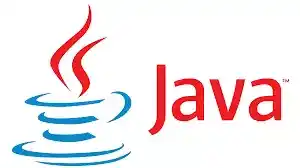Basic example of Java DataBase Connectivity | Java Connectivity | RDBMS | Java Programs
Java JDBC tutorial for beginners
Java Database Connectivity (JDBC) Tutorial with Example
What is Java Database Connectivity (JDBC)?
JDBC is a Java-based API that allows developers to connect and execute SQL queries with any relational database management system (RDBMS). It is database-independent, meaning you can use JDBC to interact with MySQL, Oracle, PostgreSQL, and more without changing your Java code significantly.

Why Use JDBC?
- Database Independence: JDBC works with any RDBMS, making it versatile.
- Ease of Use: Provides a simple and consistent interface for database operations.
- Performance: Enables efficient data retrieval and manipulation.
- Security: Supports secure database connections and transactions.
Prerequisites for JDBC
Before diving into JDBC, ensure you have the following:
- Install an RDBMS Application: MySQL, Oracle, or any other relational database.
- Create a Database (Schema): Set up a database with a name of your choice.
- Create a Table: Define a table structure within the database.
- Insert Data: Populate the table with sample data for testing.
Steps to Work with JDBC
To interact with a database using JDBC, follow these steps:
- Load the JDBC Driver: Register the database driver.
-
Establish a Connection: Connect to the database using the
DriverManagerclass. -
Execute SQL Queries: Use
StatementorPreparedStatementto run queries. -
Process Results: Retrieve and process data using the
ResultSetobject. - Close JDBC Objects: Release resources by closing connections, statements, and result sets.
Implementing a Basic JDBC Example
Below is a simple Java program demonstrating JDBC connectivity with an Oracle database:
package jdbc;
import java.sql.*;
class MyFirstCode {
public static void main(String args[]) {
try {
// Step 1: Load the JDBC Driver
Class.forName("oracle.jdbc.OracleDriver");
System.out.println("Driver loaded successfully");
// Step 2: Establish the Database Connection
Connection conn = DriverManager.getConnection(
"jdbc:oracle:thin:@//shubham-pc:1521/orcl", "scott", "tiger");
// Step 3: Create a Statement Object
Statement st = conn.createStatement();
// Step 4: Execute SQL Query
ResultSet rs = st.executeQuery("SELECT ename, sal FROM emp");
// Step 5: Process the ResultSet
int total = 0;
int count = 0;
while (rs.next()) {
String name = rs.getString(1);
int salary = rs.getInt(2);
System.out.println(name + "\t" + salary);
total += salary;
++count;
}
System.out.println("Average salary is " + (float) total / count);
// Step 6: Close JDBC Objects
rs.close();
st.close();
conn.close();
} catch (SQLException ex2) {
System.out.println("Failed to connect to the database: " + ex2.getMessage());
} catch (ClassNotFoundException ex1) {
System.out.println("Failed to load the driver: " + ex1.getMessage());
}
}
}
Key Points to Remember
- Add JDBC Driver JAR File: To use JDBC, include the database-specific JAR file in your project. Right-click on your Java project, select Build Path > Add External Archives, and choose the JAR file.
-
Exception Handling: Always handle
SQLExceptionandClassNotFoundExceptionto ensure robust code. -
Resource Management: Close all JDBC objects (
Connection,Statement,ResultSet) to avoid memory leaks.
Conclusion
Java Database Connectivity (JDBC) is an essential tool for Java developers to interact with relational databases. By following the steps outlined in this guide, you can easily connect to a database, execute queries, and process results. Whether you're building a small application or a large-scale system, JDBC provides the flexibility and performance you need.
For more tutorials and updates, follow us on Instagram and Facebook. Happy coding!
Table of content
- Introduction to Java
- Java Basics
- Setting Up Java Development Environment
- Writing and Running Your First Java Program
- Java Syntax and Data Types
- Operators in Java
- Control Statements (if-else, switch, loops)
- Object-Oriented Programming (OOP) in Java
- Classes and Objects
- Constructors in Java
- Inheritance in Java
- Polymorphism (Method Overloading and Overriding)
- Encapsulation and Abstraction
- Interfaces and Abstract Classes
- Exception Handling in Java
- Types of Exceptions
- Try-Catch Block
- Finally Block and Throw/Throws
- Custom Exceptions
- Java Collections Framework
- Introduction to Collections
- List, Set, and Map Interfaces
- ArrayList vs LinkedList
- HashMap vs HashSet
- File Handling in Java
- Multithreading in Java
- Introduction to Threads
- Thread Lifecycle
- Creating Threads (Thread Class vs Runnable Interface)
- Synchronization and Deadlocks
- Networking in Java
- Java Networking Basics
- Socket Programming
- HTTP Requests in Java
- Java Database Connectivity (JDBC)
- Introduction to JDBC
- Connecting to MySQL Database
- Executing SQL Queries
- Using Prepared Statements
- Java Frameworks and Technologies
- Introduction to Spring Framework
- Hibernate ORM
- JavaFX for GUI Applications
- Java Interview Preparation
- Additional Java Resources
- Best Books to Learn Java
- Java Certification Guide
- Online Java Practice Platforms